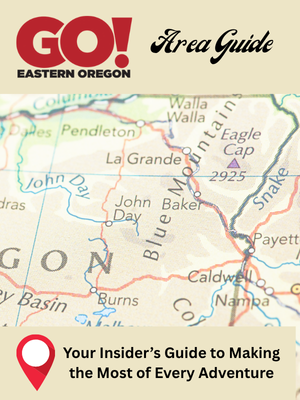COLUMN: Annual pilgrimage to a particular ponderosa pine
Published 12:00 pm Friday, June 9, 2023
There is a particular ponderosa pine, one among the millions in Baker County, that I usually visit at least once a year.
I don’t make the trip solely to see this specific tree.
In that way the pine is rather like a childhood friend who has stayed in your hometown while you’ve moved away — a friend you hope you might run across in the grocery store or at the park when you come back to spend a few days.
Except the pine is always there.
At least so far.
Whenever I hike the Dutch Flat trail, in the Elkhorn Mountains northwest of Baker City, I always remember the pine even if I hadn’t been thinking of it when I started up the path.
My memory is kindled when the trail comes around a ridge and traverses a slope of granitic sand on the north side of Dutch Flat Creek.
The stream, which flows from the lake of the same name at the head of one of the great glacial valleys scooped from the Elkhorns’ bedrock, careens through a gorge about 100 feet below the trail.
It’s the sort of place where even one of those extreme kayakers — someone who considers it fine sport to leap off waterfalls protected only by the slender plastic vessel — might ponder a portage.
Loud, too — you can hear the bass rumble of the creek quite some ways before you see it.
Even in late summer, when the last of the snowfields has succumbed to the sun, Dutch Flat Creek, which is supplemented by several springs as well as by Van Patten Creek, is still pretty frothy as it threads between the boulders.
In late spring, swollen by snowmelt, it’s a turbid maelstrom.
On my most recent trip, on the rainy early afternoon of May 28, I fancied that I could not only see and hear the stream but even feel it, a gentle thrumming through my boots as the water pounded its way toward its meeting with the North Powder River a couple miles down the canyon.
As always I looked south, across the gorge, searching for the pine.
It stands at the top of a nearly sheer slope — the type of feature typical along streams in the mountains as the water inexorably claws its way ever downward.
Although I’ve never stood beside the tree — crossing the creek would be a damp endeavor in any season, but foolhardy during the spring runoff — I can tell even from a distance that it’s likely a century or more old. I would put its height at 75 feet and its trunk 30 inches or more through the middle. It’s kin, I suspect, to the fine old growth ponderosas that grow on the south-facing slope above the trail.
But it’s not the pine’s size that makes it conspicuous.
It’s the precarious position.
The tree stands at the absolute edge of the slope. Beyond the edge, actually. Some of its roots are anchored in neither soil nor stone — rather they hang in space, like the legs of an alpinist who has reached a tricky overhang and is casting about for a foothold.
I have no doubt that the wind blows a fair bit, as wind tends to do in the mountains.
And given its elevated spot, the pine must bear the brunt of the gusts. It seems to me not merely plausible, but something closer to certain, that if a winter gale doesn’t put paid to this ponderosa, then a vicious, capricious summer storm will catch it unawares.
I can even imagine what would happen over the ensuing years and decades if, as seems likely, the tree finally topples down the cliff. I doubt even the power of the creek in flood would carry the bole downstream.
But I can envision one end coming to rest near the shore, stuck like a pencil dropped into a patch of mud.
Over the years the thick orange-red bark, the mark of a mature ponderosa, would peel off, revealing the heartwood, dark gray to start but eventually grading toward white. What with the size of this pine it might well persist for a century or more, even in death.
But then it might also continue to stand for such a span, such are the vagaries of nature and the sheer obstinacy of certain trees.
Anyway I appreciate that the pine persists.
I have ample motivation to hike the Dutch Flat trail, year after year. It is the most eclectic of Elkhorn paths, crossing open slopes and traversing dense
forests, sometimes running beside the placid stream and sometimes straying so far away that I can no longer hear its music.
The trail crosses one of the grandest meadows in the range — Dutch Flat — and passes the equally beautiful lake of the same name before its final switchbacking climb between granitic boulders to its end at Dutch Flat Saddle and the Elkhorn Crest Trail.
But the ponderosa is yet another enticement, an ongoing chapter whose conclusion I can’t predict but the answer to which I find eternally compelling.








